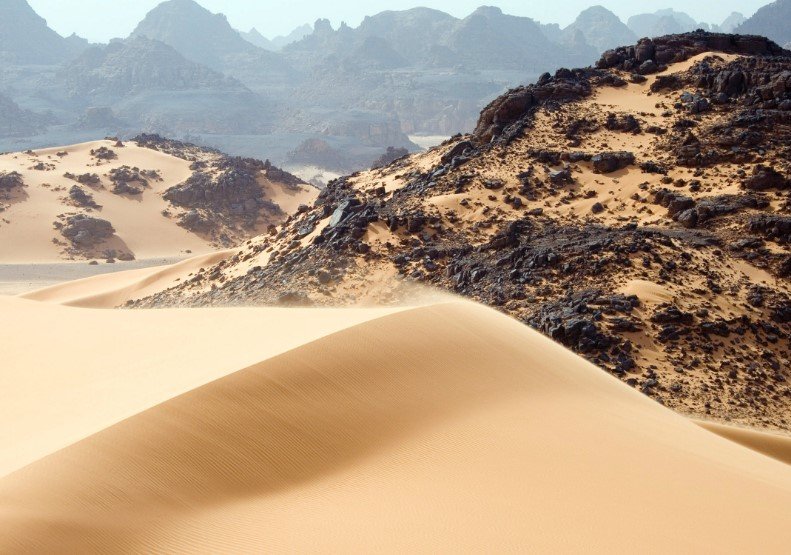A fierce heatwave is baking Egypt this week, sending temperatures soaring above 40°C in Cairo and pushing parts of Upper Egypt into near-scorching territory. But there’s a break on the horizon—just hang in until Tuesday.
Egypt’s Meteorological Authority confirmed that Monday marks the blistering peak of this heatwave, with some areas sizzling well beyond the seasonal average. From sharp sun exposure to swirling dust, it’s the kind of weather that makes you rethink every outdoor errand.
Monday’s Heatwave Hits a Brutal High
Cairo is known for its warm springs and unforgiving summers, but even by Egyptian standards, Monday’s temperature spike feels especially intense.
The capital is expected to breach the 40°C mark in shaded areas, with sunlit streets feeling even hotter. Meanwhile, Upper Egypt won’t be spared either—temperatures there are expected to flirt with 44°C, according to Dr. Manar Ghanem, spokesperson for the Egyptian Meteorological Authority.
Her appearance on Al-Hayat TV laid it out plainly: “These highs are typical for the last week of May,” she said. “Historically, this is one of the hottest times of year in Egypt.”
The keyword here is “typical,” but that doesn’t make it any easier to handle.

Winds, Dust, and Warnings for At-Risk Groups
And it’s not just the heat itself that has people talking—it’s what comes with it.
High winds and dusty conditions are expected across several regions. The combination can spell trouble, especially for those with asthma or other respiratory issues. The Meteorological Authority strongly advised vulnerable groups to remain indoors during the afternoon, when conditions are expected to be at their worst.
One sentence here will do: Sand particles, whipped up by wind, reduce visibility and aggravate breathing problems.
There’s also increased risk on roads. With visibility down and tempers up, driving during peak heat hours could be a recipe for frustration—or worse.
Here’s what officials are recommending:
-
Avoid going out from noon to 4 p.m., unless absolutely necessary
-
Stay hydrated, even if you’re not thirsty
-
Keep elderly individuals and children cool and indoors
-
Wear light clothing and stay in the shade when outdoors
It’s basic advice, sure—but when the heat hits like this, it could make all the difference.
From 44°C to 33°C: The Dip We’ve Been Waiting For
Good news? It’s coming. And it’s not just wishful thinking.
Dr. Ghanem noted that starting Monday night, a noticeable cooling trend will set in. Daytime temperatures in Cairo will fall by 7 to 9 degrees by Tuesday, landing somewhere between 31–33°C. That range is expected to hold steady through the end of the week.
Even in Upper Egypt, where the sun’s bite is typically sharper, things should ease up a bit by midweek.
This sudden drop is due to a change in wind patterns. Cooler northern winds are expected to sweep in starting Monday evening, pushing away the hot air mass currently hovering over the region.
One sentence here—finally, a breath of slightly cooler air.
Hotter Springs, Tougher Summers
Egypt isn’t new to high temperatures. But over the last few years, the heat has started arriving earlier—and staying longer.
Climatologists have observed a trend: more frequent extreme heat days and longer heatwave periods. While it’s difficult to pin every heatwave on climate change, the patterns are becoming harder to ignore.
A 2023 report by the Egyptian Environmental Affairs Agency noted that Egypt’s average spring temperatures have climbed by 1.2°C over the past two decades. It’s not just a number—it’s showing up in higher utility bills, longer electricity use hours, and more hospital admissions for heat-related issues.
The country’s growing urbanization also plays a role. Cities like Cairo, with dense buildings and minimal green space, trap heat more than rural areas—a phenomenon known as the urban heat island effect.
So yes, late May is always hot. But lately, it’s gotten just a bit more unbearable.
Daily Lives Disrupted, From Markets to Mosques
The heatwave hasn’t just been an atmospheric event. It’s been a social one.
Street vendors in downtown Cairo have had to cut back hours. Shoppers rush through open-air markets rather than linger. And taxi drivers, many without functioning air-conditioning, are choosing early morning shifts and skipping the mid-afternoon melt.
Even places of worship are adjusting. Several mosques have issued advisories to shorten outdoor religious gatherings. Volunteers are handing out water bottles during prayer times to help attendees stay cool.
One sentence again—life doesn’t stop, but it certainly slows down.
The Ministry of Health has prepped hospitals for a potential uptick in heatstroke and dehydration cases. Emergency rooms in Asyut and Minya, two of the hottest governorates this week, reported an increase in walk-ins complaining of fatigue and dizziness.
